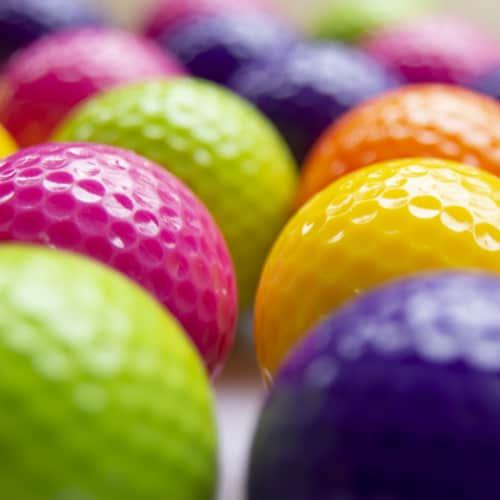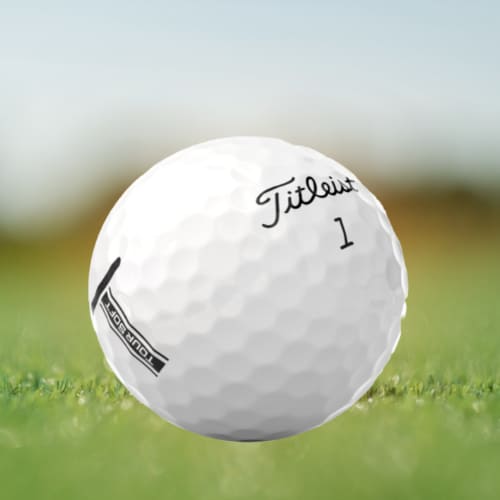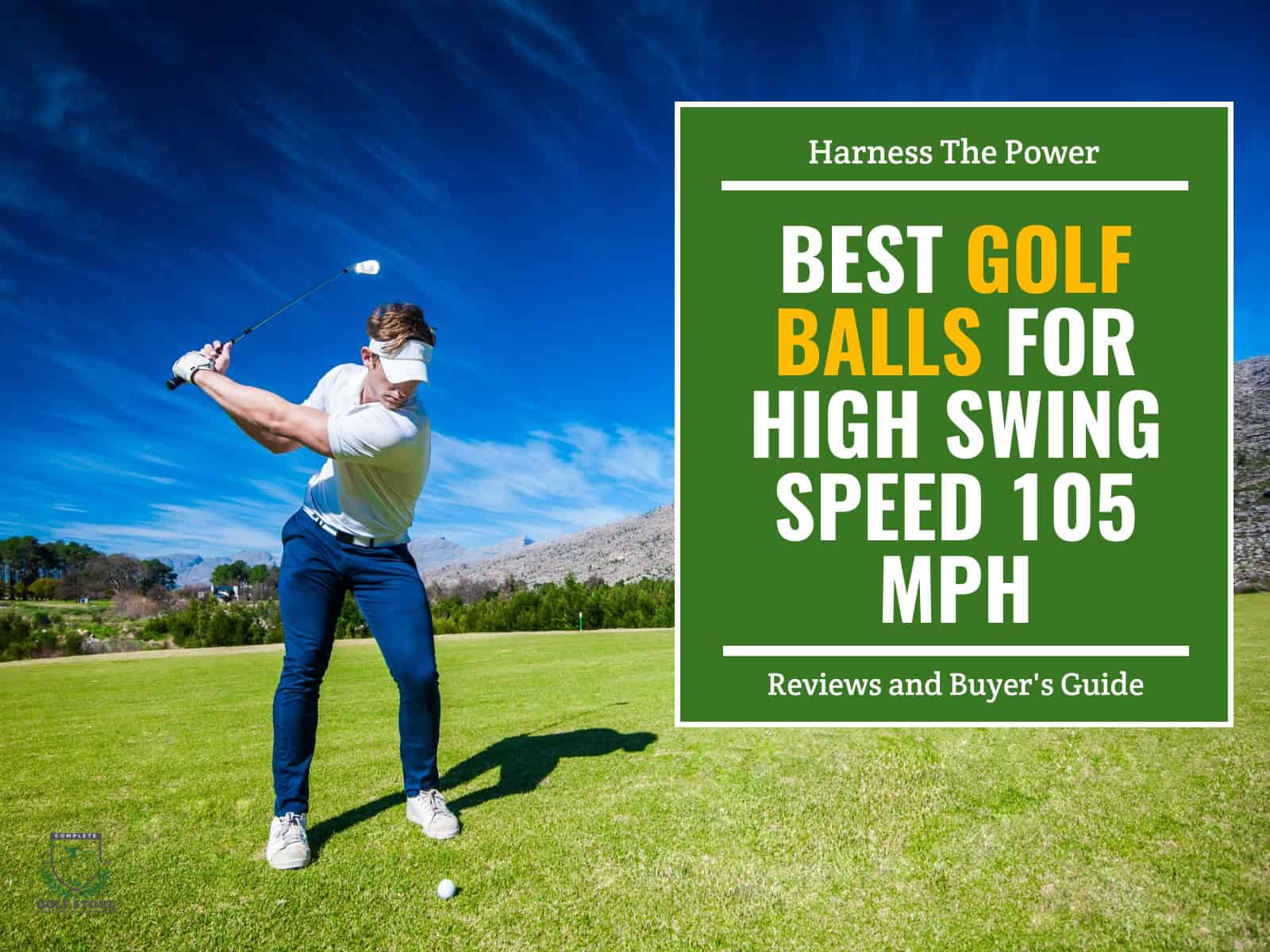Have you ever wondered if you should switch golf balls for the winter season? As the days grow shorter and the temperatures drop, many golfers face this dilemma. Should you stick with your usual ball or change to something new? The choice ultimately comes down to personal preference, but there are important factors to consider.
This article examines the key considerations around playing characteristics, pricing, and performance that come into play when deciding which golf ball is best for your winter rounds. We will also review the top picks you can choose for your winter golf rounds and provide the crucial factors to consider before finalizing your purchase. Especially for beginner golfers, choosing the right ball is crucial for learning and improvement.
Clear and practical, the article provides guidance for you to make an informed decision aligned to your game, budget, and the realities of winter golf.
| Product | Features | Our Rating | Purchasing Options |
|---|---|---|---|
 Callaway Supersoft Golf Balls |
| ||
 TaylorMade Distance+ Golf Balls |
| ||
 Wilson Staff DUO Soft Golf Balls |
|
Note: Prices listed on this page are subject to change. To view the latest pricing information, please check the vendor's website directly using the links provided.
The Effect of Cold Weather on Golf Ball Distance
The main reason for reduced distance in colder temperatures comes down to air density. As air gets colder, it becomes more dense and creates more drag on the ball during flight, reducing carry distance.
Research by major golf ball manufacturers like Titleist has quantified this effect. Their studies found that for every 20-degree drop in temperature, a golfer can expect approximately a 1.5 percent decrease in distance. For a player whose average drive is 250 yards in normal conditions, a 20-degree temperature drop would equate to a loss of around 3.75 yards.
Other research from sources like Trackman reinforces this effect. They estimate about a 1-yard loss in carry distance for every 10-degree drop in temperature. So going from a normal 75 degrees down to 35 degrees could rob a drive of around 4 yards on average.
It’s not just the cold air density though. Swing changes brought on by cold weather can also impact distance. More layers of clothes restrict movement, decreasing clubhead speed. The cold causes muscles to be tighter and less flexible too. So both equipment and body factors combine to limit how far you can hit shots in very cold temperatures.
The key takeaway is that significant cold weather drops of 20 degrees or more can decrease drives and other shots by around 1.5-4 yards on average. Knowing this, you may consider using a lower lofted club for a given distance shot in very cold conditions. Being prepared for the effect and adjusting the approach is the best way to combat cold weather distance loss.
Our Favorite Cold Weather Golf Balls for 2025
After extensive testing and research, we provided reviews of our recommended golf balls to use in cold weather and ensure your game doesn’t take a big hit. All the balls on our list are great performers, and whichever you end up choosing, we guarantee that you will be happy with your purchase.
#1 - Callaway Supersoft Golf Balls
The 2023 Callaway Supersoft golf balls are designed for high performance and exceptional feel. As one of Callaway’s most popular models, these balls deliver long distance, straight ball flight and a super soft feel that golfers love. Recent upgrades to the cover, core, and construction make the Supersoft even better suited for cold-weather play.
You’ll notice the soft feel immediately. The softer cover system generates better greenside control and spin. Combined with the fast, low-compression HyperElastic SoftFast core, you get the best of both worlds – fast ball speed for distance and a soft response around the greens. The hybrid ionomer cover also proves durable over multiple rounds.
During testing in cold conditions, the Supersoft maintained both distance and feel. The soft compression core resists hardening, while the hybrid cover retains responsiveness across a wide temperature range. Missed hits don’t punish your hands thanks to the soft construction.
For the golfer seeking straight, high-launching shots with an exceptionally soft response, the Callaway Supersoft is an excellent choice. The ball performs well with woods, irons, and wedges, making it versatile for all-weather play.
Pros
- Softer cover improves greenside control and feel
- Fast, low-compression core increases ball speed
- Straight, high-launch trajectory
- Durable hybrid ionomer cover
- Retains soft feel in cold conditions
Cons
- Lacks workability for shaped shots
- Not as high spinning around greens as urethane balls
With exceptional feel, distance, and control – especially in cold weather – the 2023 Callaway Supersoft lives up to its billing. The soft feel stands out, even after multiple rounds, with the newly enhanced cover providing excellent greenside spin and control to attack pins.
#2 - TaylorMade Distance+ Golf Balls
TaylorMade’s Distance+ golf ball is designed to deliver speed, distance and a soft feel even in cold weather conditions. This 12-ball pack features a two-piece construction with a compression rating of 77, promoting faster ball speeds with a soft feel at impact. The REACT Speed Core contributes to high velocity for distance on full shots.
With its 342 aerodynamic dimple pattern, this ball achieves a penetrating trajectory while reducing drag. The added alignment aid supports better aim and roll. As one of the best golf balls for cold weather, the Distance+ ball resists hardening in lower temperatures.
The Distance+ truly lives up to its name in promoting distance in your game.
Pros
- Delivers fast ball speed for distance
- Soft feel on all shots
- 342 dimples enhance aerodynamics
- Alignment aid improves aiming
- Durable surlyn cover
Cons
- Lacks spin control around greens
- Not as soft as urethane-cover tour balls
The combination of technologies makes the TaylorMade Distance+ ball ideal for high-handicap players seeking more distance. With features explicitly engineered for speed, this ball indeed classifies among the best for cold conditions. The surlyn cover provides durability without compromising velocity. If you tend to lose balls but still want performance in cold weather, Distance+ is difficult to beat on value.
#3 - Wilson Staff DUO Soft Golf Balls
As one of the top performers for cold weather play, the 2022 Wilson Staff DUO Soft golf balls live up to their reputation as the world’s softest while adding enhanced distance. The reformulated core maximizes energy transfer for faster ball speeds while a soft ionomer cover provides excellent feel and greenside control.
Each impact feels fantastic with the DUO Soft’s low compression core compressing deeply into the clubface then springing back with tremendous energy return. Distance gains are evident across the entire bag. Drives fly several yards farther thanks to velocity-boosting core technology. Iron shots also benefit from extra yards thanks to maximum energy transfer.
Around the greens is where the DUO Soft truly outperforms the competition. The soft ionomer cover grabs aggressively on pitch and chip shots, helping you spin the ball easily to control your landing position. This level of feel and control makes the DUO Soft an excellent performer for winter play.
Pros
- Very soft feel off all clubs
- Faster ball speed for added yards
- Excellent greenside spin and control
- Highly durable ionomer cover
- Low driver spin minimizes hooks/slices
Cons
- Can lose yards in very cold temps
Delivering one of the softest feels in golf combined with technology-enhanced distance and superb greenside playability, the Wilson Staff DUO Soft is a leading ball for winter season performance earning our strong recommendation.
#4 - Nitro Pulsar Golf Balls
Our next pick – The Nitro Pulsar golf balls are designed to deliver exceptional distance and a softer feel, making them a good choice for cold weather play. The titanium-fused hybrid ionomer cover provides a penetrating trajectory with the higher lift, while the high energy speed core feels soft yet maintains optimal launch conditions and faster ball speeds. The 352 dimple design resists wind for stability off the tee or on approach shots.
With their 90 compression rating, these balls offer a high moment of inertia for greater accuracy on mishits. They launch high with low spin to maximize distance – ideal traits when battling cold air and firmer fairways. The tour-caliber 3-piece construction also promotes that coveted soft feel around the greens. Ultimately, the Pulsar’s blend of responsive feel, penetrating flight, and wind-cheating aerodynamics make it a great option among the best cold weather golf balls.
Pros
- Penetrating ball flight resists cold air
- Soft feel around greens
- Wind-resistant dimple design
- Forgiving on mishits
- Optimized launch conditions
Cons
- Durability in very cold temps unknown
- Can lose visibility in fall leaves
With its total performance focus on key areas like distance, control, and feel, the Pulsar golf ball is well-equipped to handle cold temperatures. If you want reliable aerodynamics and a pleasing response across all shots, these Nitro balls belong in your winter golf bag. The exceptional value also makes the Pulsars easy to stock up on so you never have to cut a cold weather round short.
#5 - Srixon Soft Feel Brite Golf Balls
The Srixon Soft Feel Brite golf balls offer improved visibility and an incredibly soft feel that performs well even in cold conditions. With a price point of $22.97 per dozen, these balls represent a quality product at a reasonable price.
The FastLayer Core technology provides the soft response favored by feel players while maintaining ample distance off the tee thanks to the firmer outer edge. This gradual transition from a soft inner core to a firm perimeter retains energy for superior driver distance. The 338 Speed Dimple pattern further boosts distance by reducing drag on launch and increasing lift during descent. The high visibility matte finish stands out clearly against various backgrounds, so you can easily track your ball flight.
In testing, the Soft Feel Brite demonstrated slightly below-average driver distance compared to leading distance balls but exceeded expectations around the green. The soft, thin cover generated excellent greenside spin and superb feel on pitch, chip and putt shots. While hardcore distance seekers may prefer options that maximize yards off the tee, the Soft Feel Brite suits mid-handicap golfers needing an all-around performer ideal for cold weather play.
Pros
- Superb feel and control on short shots
- Gradual core transition for soft feel and distance
- Highly visible matte coloring
- Quality construction at a reasonable price
- Performs well in cold conditions
Cons
- Lacks yardage of leading distance balls
- Durability concerns over long term use
For mid to high-handicap golfers needing optimal cold weather performance, few balls match the Soft Feel Brite’s combination of superb feel ample distance, and visibility. While pure distance seekers may look elsewhere, the Srixon Soft Feel Brite is surely an ideal choice for golfers needing an all-around ball for cold conditions.
#6 - Bridgestone e6 Golf Balls
The newly reformulated Bridgestone e6 golf ball is designed to provide maximum distance and a soft feel for golfers with moderate swing speeds. Featuring a 2-piece construction with a low compression core, this ball is built for high ball speed while maintaining soft feel on all shots.
In relation to finding the best golf balls for cold weather play, the e6 shines given its emphasis on distance. The softer and larger core delivers faster compression even in colder temperatures leading to longer shots. Meanwhile, the soft, seamless cover provides better spin and feel compared to traditional surlyn covers that can harden in the cold.
Available in white and optic yellow, this ball suits a wide range of playing conditions. The heritage of the e6 centered on feel and distance is now paired with easier compressibility courtesy of key technical upgrades.
Pros
- Softer low compression core generates fast ball speed
- Seamless cover enables better spin and soft feel
- Larger core size boosts compression in cold weather
- Optic yellow color stands out in fall/winter conditions
- Trusted e6 line optimized for moderate swing speeds
Cons
- Priced slightly higher than basic 2-piece balls
- Less spin than premium multilayer balls
If you are facing the challenges of colder weather or simply looking for a trusted option optimized for distance and feel, the Bridgestone e6 deserves strong consideration. The technical design upgrades expand upon the e6’s respected pedigree to deliver measurable playability advantages. For golfers with moderate swing speeds prioritizing maximum yardage and soft feel, few balls can match the performance of the reformulated e6.
#7 - Mizuno RB 566 Golf Ball
Mizuno’s RB 566 is another excellent golf ball option for playing in cold weather conditions. As a two-piece construction with a durable ionomer cover, it is built to withstand the demands of lower temperatures that can negatively impact many golf balls. Its most notable feature is the micro-dimple design that promotes consistent flight performance. Each ball has about 300-400 microdimples that reduce drag for longer carry distances. Even in windy or wet conditions, you’ll notice this ball maintains its trajectory much better than comparative models.
With its low-compression core, the RB 566 also feels incredibly soft off the clubface. The energy transfer is smooth and responsive to generate that pleasant mix of distance and control. While some two-piece balls tend to feel hard, this one offers plenty of greenside spin and precision for attacking pins. Distance-wise, testing showed it is above average for its construction type. The ionomer cover is scuff-resistant as well so the ball retains its flight characteristics over repeated shots.
Pros
- Micro-dimple cover reduces drag and maintains flight
- Durable ionomer cover withstands cold conditions
- Low compression core feels soft on full shots
- Gets good greenside spin for a two-piece ball
- Above average distance compared to similar models
Cons
- Feel is firmer on very short chip shots
With impressive aerodynamics from its micro-dimple design, the Mizuno RB 566 is an excellent performer in cold weather. The durability, soft feel, and greenside control check the key boxes for keeping your game sharp during winter months. If you want a two-piece distance ball purposely built for lower temperatures, the RB 566 is a leading choice.
#8 - Pinnacle Rush Golf Balls
The Pinnacle Rush golf ball is engineered to deliver extraordinary distance and power off the tee and with every club in your bag. Made with a high-energy core and soft, durable polyurethane cover, this ball generates fast ball speeds for maximum carry while providing a soft feel around the greens. The advanced 332 dimple design also promotes a consistent, penetrating trajectory.
Ideal for golfers seeking to add yards without sacrificing control or feel, the Rush is an excellent overall choice. The energetic core produces fast velocity while the soft cover grips your wedges for spin control into greens. This blend of power and playability makes Pinnacle Rush one of the best options for low handicappers playing in cold conditions when distance and penetration matter most.
Pros
- Generates fast ball speed for distance off the tee and through the bag
- Soft cover promotes greenside spin and control
- Advanced dimple pattern delivers consistent, penetrating flight
- Vibrant matte yellow finish stands out against snow
- Affordable 3-piece construction provides tour-level quality
Cons
- Lacks workability compared to urethane-cover tour balls
- Durability can’t match surlyn-cover distance balls
With its enhanced distance, penetrating flight, soft feel, and vivid visuals, the Pinnacle Rush is the total package for winter golf. The exceptional blend of speed and control in this ball helps you cut through cold air and breeze-blown courses to reach more greens and shoot lower scores.
#9 - Volvik Vimax Golf Balls
Our last pick (but not least) is Volvik Vimax golf balls, which are designed for optimal performance in cold weather conditions. With a price of $29.95 per dozen, these synthetic balls offer good value, given their specialized construction. Weighing 1.4 pounds per dozen, the Vimax features a high-energy soft core encased in a firm ionomer cover. This combination provides both a soft feel on impact and fast initial ball speed for maximized distance.
Specifically engineered for play in colder temperatures, the matte finish and pastel colors aim to improve focus and psychological stability. The icosahedron dimple pattern also promotes a straight, stable ball flight trajectory. Compared to traditional glossy models, the Vimax reduces glare while the soft core retains resilience to maintain speed and distance. When hitting drivers, the low spin rate and high launch angle lead to superior yardages.
Pros
- Soft feel and fast speed in cold conditions
- Matte finish reduces glare and improves focus
- Low driver spin rate maximizes distance
- Durable ionomer cover provides great feel
- Reasonably priced for a specialty cold-weather ball
Cons
- Can scuff more easily than premium balls
For golfers needing reliable performance in cold temperatures, the Volvik Vimax is an excellent value-packed offering. The soft feel, matte colors and specialty construction make hitting these balls a pleasure even when the weather turns frosty. If you regularly brave chilly mornings on the course, the Vimax deserves strong consideration for your next season of play.
Buying Guide – Factors to Consider in Golf Balls to Use in Cold Weather
We have compiled a list of the most important factors you should keep in mind so that you can choose the best golf ball for your needs in cold weather. Let’s discuss them one by one.

Softer or Firmer Feel?
In cold conditions, firmer golf balls tend to feel even harder at impact, reducing playability and control around the greens. At the same time, very soft balls can rob distance in cold air. Finding the right balance is key:
- Softer balls like Callaway Supersoft or Titleist Tour Soft offer an improved feel and short game control. The extra spin makes hitting and holding greens easier.
- Slightly firmer choices like TaylorMade’s Project (a) or Bridgestone e12 Soft optimize distance in cold air while still providing a responsive feel on shots inside 100 yards.
The ideal ball has a firmness that works for your swing speed and provides the preferred sensation. Testing different compressions that suit your game is the best approach.
Color, Visuals & Visibility

The shade of white used on most balls blends easily into dormant grass and snow. Switching to a high-visibility color like yellow, orange, green, or pink can make spotting shots much simpler:
- Callaway Supersoft and Chrome Soft balls offer yellow and orange options to consider. Visibility exceeds traditional white models.
- Volvik’s vivid colored balls stand out sharply against winter backgrounds. The matte finish also reduces glare.
- Titleist’s Tour Speed comes in orange and pink for straightforward spotting with the performance of a tour ball.
Brighter balls are tremendously useful for tracking shots in low light and speeding up winter play.
Beyond the standard colors mentioned, glow in the dark golf balls can be a game-changer for night owls and twilight enthusiasts. These Nighttime Aces illuminate the course, enhancing visibility, extending your playing time, and adding a fun and functional twist to your winter golf experience.
Ball Cover
The outer layer impacts feel and ball flight. Softer covers increase spin and promote high arcs while firmer ones reduce spin and launch the ball lower.
Most distance balls have surlyn or similar firm covers to lower spin off the tee. Examples are the Bridgestone E6 Speed and Callaway Supersoft.
On the other hand, urethane-covered balls like the Titleist Pro V1 produce higher spin rates around the green for greater stopping power.
Factor in your skill level and areas you want to improve when deciding on a cover material.
Long vs. Short Game
Determining strengths and weaknesses in your long game versus short game can indicate the ideal performance traits for cold weather rounds:
If you are struggling off the tee, you should prioritize lower spin and extra yards in a distance model like the TaylorMade Project (a) or Callaway’s Chrome Soft X LS.
If you are usually inconsistent closer to the green, you might want to seek maximum friction and stopping power with a softer ball like the Titleist Tour Soft or 2021 Chrome Soft.

There are winter-specific designs, too, like the TaylorMade TP5x Winter or Callaway Supersoft Magna that fine-tune flight for the cold.
Price Point
With the wide variety of price points now available, finding an optimal ball for winter no longer requires paying premium prices. Here are some excellent performers under $30 per dozen:
- Callaway Supersoft and Supersoft Magna balls cost around $25 per dozen for impressive visibility and soft feel.
- Bridgestone’s E6 Soft optimizes feel and accuracy at moderate swing speeds for roughly $28 per dozen.
- Titleist’s Tour Speed balls check all the boxes at $30 per dozen.
There are plenty of solutions to dial in an ideal cold-weather golf ball without breaking the bank.
With wide price variances from basic range balls to high-end tour models, understanding key differences between practice and regular balls can help guide smart investments for improving your game on a budget.
Final Thoughts
While colder temperatures present unique challenges for golfers, creative solutions can help maximize the enjoyment of the sport year-round. Opting for cheaper, brightly-colored balls improves visibility and minimizes frustration over lost balls hidden in leaves or snow. Accepting slightly reduced distance expectations allows focus on the camaraderie, exercise, and relaxation golf affords. Adaptability opens the door to pleasant experiences.
We all define an ideal round differently. Perhaps yours involves striping towering drives down narrow fairways. Or laughing for four hours with old friends. Either way, minor adjustments like using equipment matched to conditions allow you to shape each round into a success.
What strategies have you found best for cold-weather golf? Are there small tweaks or perspective shifts that transformed your off-season play? Please share your ideas below to help fellow golf enthusiasts make the most of fall and winter rounds.











